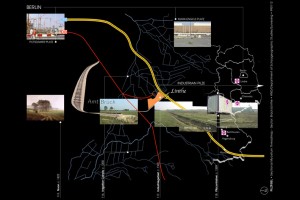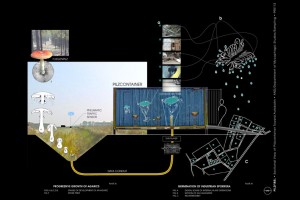Pilzcontainer investigates the re-circuiting of industrial production and distribution networks via a site-specific, computer-driven installation that reacts in real-time to the flow of traffic on a nearby autobahn.
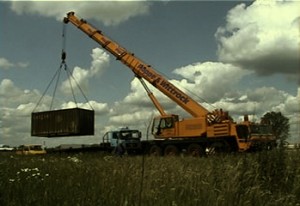
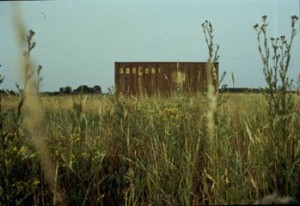
The project begins with the placement of a standard industrial shipping container within the open landscape of a glacial basin, at a point where the Deutches Bundesbahn tracks serving the industrial zone are interrupted by one of the many canals cut by the Dutch in the 14th century for the irrigation of the surrounding farmland. On axis with this canal is an opening in a line of trees revealing the Autobahn A9 in the distance.
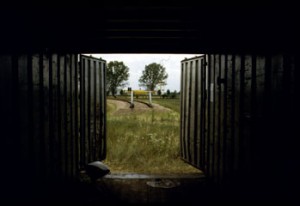
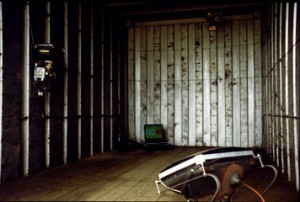
Within the shipping container, a series of cathode ray tubes display digital video clips of cyclic robotic production processes at work within the industrial zone. The CRTs are stripped from their housing – their wiring and electronics exposed – and oriented face-up from the floor, as sculptural objects drawing upon a simple metaphor between the form of a cathode ray tube and that of a mushroom. Through the deployment of a microwave traffic sensor, the rate of the passing traffic on the Autobahn is funneled down the canal to the shipping container where a programmable microprocessor translates the rate of traffic to the frame-rate for the video playback. As the rate of traffic increases or decreases, so does the rate of the robotic machinery’s repetitive movements that the CRTs display.



Accompanying this modulated dance is a live audio feed from a shotgun microphone situated adjacent to the traffic sensor by the Autobahn. The sound of passing cars -amplified through the natural resonance of the shipping container – reverberates across the open meadow within which the container is situated.
CREDITS:
Pilzcontainer was on view as part of the ‘Areale99’ festival from June 25th – July 11, 1999 in Brück/Linthe, Germany. Special thanks to Susken Rosenthal and Benoit Maubrey of Kunstpflug e.V.
Funding for the development of the Pilzcontainer was provided by the Experimental Television Center through a Finishing Funds award, a program sponsored by the New York State Council on the Arts. Funding for the deployment of the Pilzcontainer was provided by the USIS/Amerika Haus, Berlin.
Thanks to Carlos Tejada, Achim Goebel, Jeff Shepard, Dylan Mackay, and Nathan Pooley for the generous contribution of their technical expertise.
